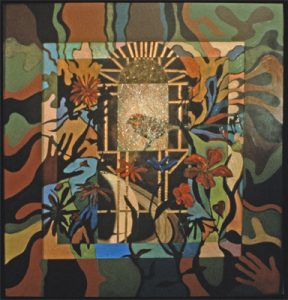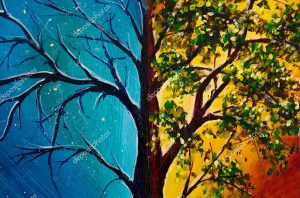 The Columbia City Yoga on-line Moving into Meditation class met this morning. We continued the practice of building beloved community. We considered how identity enables us to flourish and how it can also divide us. We explored Anu Gupta’s Individuation inquiry in which we imagined being subject to bias – someone’s mistake beliefs about who are. We also imagined the counterposing experience of being recognized as who we really are. I hope these inquiries will help us to be more mindful and present with one another and ourselves.
The Columbia City Yoga on-line Moving into Meditation class met this morning. We continued the practice of building beloved community. We considered how identity enables us to flourish and how it can also divide us. We explored Anu Gupta’s Individuation inquiry in which we imagined being subject to bias – someone’s mistake beliefs about who are. We also imagined the counterposing experience of being recognized as who we really are. I hope these inquiries will help us to be more mindful and present with one another and ourselves.
We drew inspiration from Sharon Salzberg’s conversation with Dr. Simran Jeet Singh. Simran is the Executive Director of the Inclusive America Project. We also drew from his book, The Light We Give. This book is part memoir, spiritual journey and a call for greater acceptance and love.
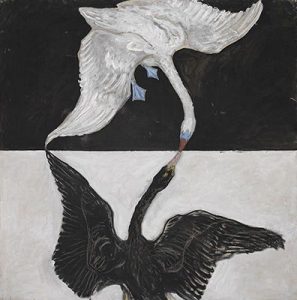 We practiced mindfulness and explored Anu Gupta’s Individuation exercise. This inquiry recreates the experience of being subject to stereotyping and then imagining the experience of being truly recognized without bias.
We practiced mindfulness and explored Anu Gupta’s Individuation exercise. This inquiry recreates the experience of being subject to stereotyping and then imagining the experience of being truly recognized without bias.
We heard the prosaic lines of Omid Safi’s On Being essay, May We Cherish a Love That Is Raw, Gritty and Real. Omid is a professor of Islamic Studies specializing in mysticism and the liberationist traditions of Dr. Martin Luther King among others. He teaches in the Sufi tradition of Radical love.
Last week we brought mindful inquiry to the human habit of stereotyping. We reflected on the difficulties of immigrant experience. We practiced a stereotype replacement exercise as a way to think and feel beyond our assumptions to recognize a person’s humanity.
This week I was moved by a conversation I heard between Sharon Salzberg and Dr. Simran Jeet Singh. Dr. Simran shared how he struggled with his identity growing up in a Sikh family in Texas. He experienced 9/11 as a high school senior. He described the painful experience of how wearing a turban and beard drew persecution and suspicion. He also shared his struggle with grief and anger after a gunman fatally shot six people and wounded four others in a Sikh Temple in 2012. His faith helped him to navigate these experiences. He explained:
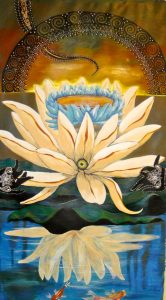 This is where the tradition of service and justice becomes so central to Sikh practice. It is an expression of love. It is the feeling of oneness that moves one to act for others because they are seen as connected and other people’s suffering is our own suffering. To reduce their suffering is a gift that we can give to them and to ourselves.
This is where the tradition of service and justice becomes so central to Sikh practice. It is an expression of love. It is the feeling of oneness that moves one to act for others because they are seen as connected and other people’s suffering is our own suffering. To reduce their suffering is a gift that we can give to them and to ourselves.
This discussion made me think about how identity plays such an important role in our ability to flourish. And it can also be a lightning rod for division and the kind of discrimination that seems to be so prevalent in our country today. I struggle with the fact that many belief systems offer wisdom and cause harm. A friend and colleague shared her thoughts on this:
My way is to hold the mystical, deep teachings from each of the belief systems. These are the wisdom teachings. This is where the similarities lie. This is where the kindness, love, inclusion and oneness are.
 I aspire to navigate life by these qualities. Kindness, love and inclusion support the realization of oneness. I hope we celebrate the individual expression of identity and embrace our shared humanity. Dr. Singh’s book, The Light We Give, offers encouragement:
I aspire to navigate life by these qualities. Kindness, love and inclusion support the realization of oneness. I hope we celebrate the individual expression of identity and embrace our shared humanity. Dr. Singh’s book, The Light We Give, offers encouragement:
If we can learn to see humanity in ourselves and in one another, we can mitigate so much of the self-inflicted pain we feel daily.
I hope that our mindfulness practice will help us to discover as Dr. Singh says:
What . . . it look[s] like to truly love our neighbors, including those who don’t love us back.
These thoughts lead me to introduce Anu Gupta’s Breaking Bias practice of individuation. This practice helps us to notice stereotypes when they arise in the mind. Our curiosity and interest can help us to see past our ideas about people and learn who they truly are. We can appreciate the complexities and diversity in ourselves and others. Anu says this practice bridges the mind with the heart.
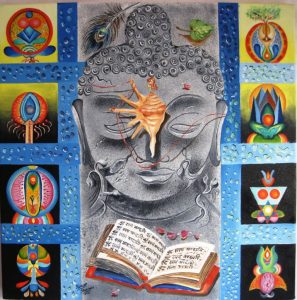 Let’s begin our exploration. Please adjust your position as you need to be at ease and mindful. You might do a brief stretching movement and take a few deep breaths. You can close your eyes or gaze at a stationery point in front of you. As you settle into stillness let the breath resume its natural expression. Notice the inhales and the exhales. As you’re ready, begin to move awareness through your body. Notice any tension and relax whatever you can over the brow, jaw and mouth. Your neck and upper back. Feel around your shoulders, down your arms and through your hands. Release whatever you can. Feel around your chest and belly. Your spine and pelvic bowl. Feel around your hips, down your legs and into your feet. Sense your whole body as it breathes.
Let’s begin our exploration. Please adjust your position as you need to be at ease and mindful. You might do a brief stretching movement and take a few deep breaths. You can close your eyes or gaze at a stationery point in front of you. As you settle into stillness let the breath resume its natural expression. Notice the inhales and the exhales. As you’re ready, begin to move awareness through your body. Notice any tension and relax whatever you can over the brow, jaw and mouth. Your neck and upper back. Feel around your shoulders, down your arms and through your hands. Release whatever you can. Feel around your chest and belly. Your spine and pelvic bowl. Feel around your hips, down your legs and into your feet. Sense your whole body as it breathes.
I invite you to visualize an image of yourself. Take the time you need to see yourself. What is the one thing that people assume about you or a stereotype for a group you belong to? Let that one thing they assume about you be something that isn’t true. As the one thing arises, lean in to your internal experience. Notice what happens in the mind when someone else has made that assumption about you. Notice the thoughts and emotions that arise. There may be a sense of defensiveness, disappointment or anger. There may be emptiness or numbness. Recognize and feel the emotions that may be present.
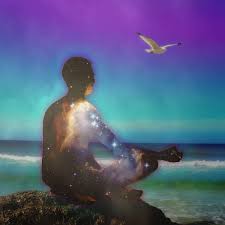 Now begin to go deeper. Notice the body sensations that arise with the emotions that arise. If there’s disappointment, what does that feel like in the body? Is there soreness or a tightness? Is there movement, contraction, or increase in temperature? See if you can be with and feel these sensations with curiosity and interest. What are these sensations? Where are they? This is the experience of feeling the judgment or bias of an other person.
Now begin to go deeper. Notice the body sensations that arise with the emotions that arise. If there’s disappointment, what does that feel like in the body? Is there soreness or a tightness? Is there movement, contraction, or increase in temperature? See if you can be with and feel these sensations with curiosity and interest. What are these sensations? Where are they? This is the experience of feeling the judgment or bias of an other person.
Now holding that image of yourself in your mind. Imagine one thing you wish people new about you. Something that is true. Regardless of your identity and the groups you belong to. Imagine others could recognize this one thing about you. Now lean into your internal experience and notice what happens in the mind when someone knows this about you. When someone truly sees you and hears you for who you are. Notice the types of thoughts and emotions that arise. Perhaps ease, openness or connection.
See if you can sense more deeply for the body sensations that accompany those emotions and thoughts. Let thoughts and emotions fade as you focus on feeling sensations. How does ease feel? What does connection or recognition feel? Is there space? Is there a release? Where is it? What is it? This is the experience of feeling belonging, of humanization. This is what being truly seen may feel like. This is one way we might feel in a beloved community. Individuation helps us see one another as human beings sharing this human experience.
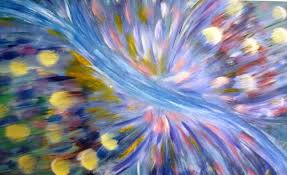 I invite you to take a few moments to feel the effects of this practice in your body, your mind, your heart. How does it feel to bring more tenderness and compassion to yourself? Hearing and responding to the language of the body is a skill we can develop with mindfulness. Extending mindful presence to others can help us to cultivate kindness, love and inclusion. Together we can realize oneness.
I invite you to take a few moments to feel the effects of this practice in your body, your mind, your heart. How does it feel to bring more tenderness and compassion to yourself? Hearing and responding to the language of the body is a skill we can develop with mindfulness. Extending mindful presence to others can help us to cultivate kindness, love and inclusion. Together we can realize oneness.
In his On Being essay, May We Cherish a Love That Is Raw, Gritty, and Real, Omad Safi writes:
We live through times when hate and fear seem stronger
We rise and fall, and light from dying embers
Remembrances that hope and love last longer
And love is love is love is love is love is love is love is love
Cannot be killed or swept aside.

